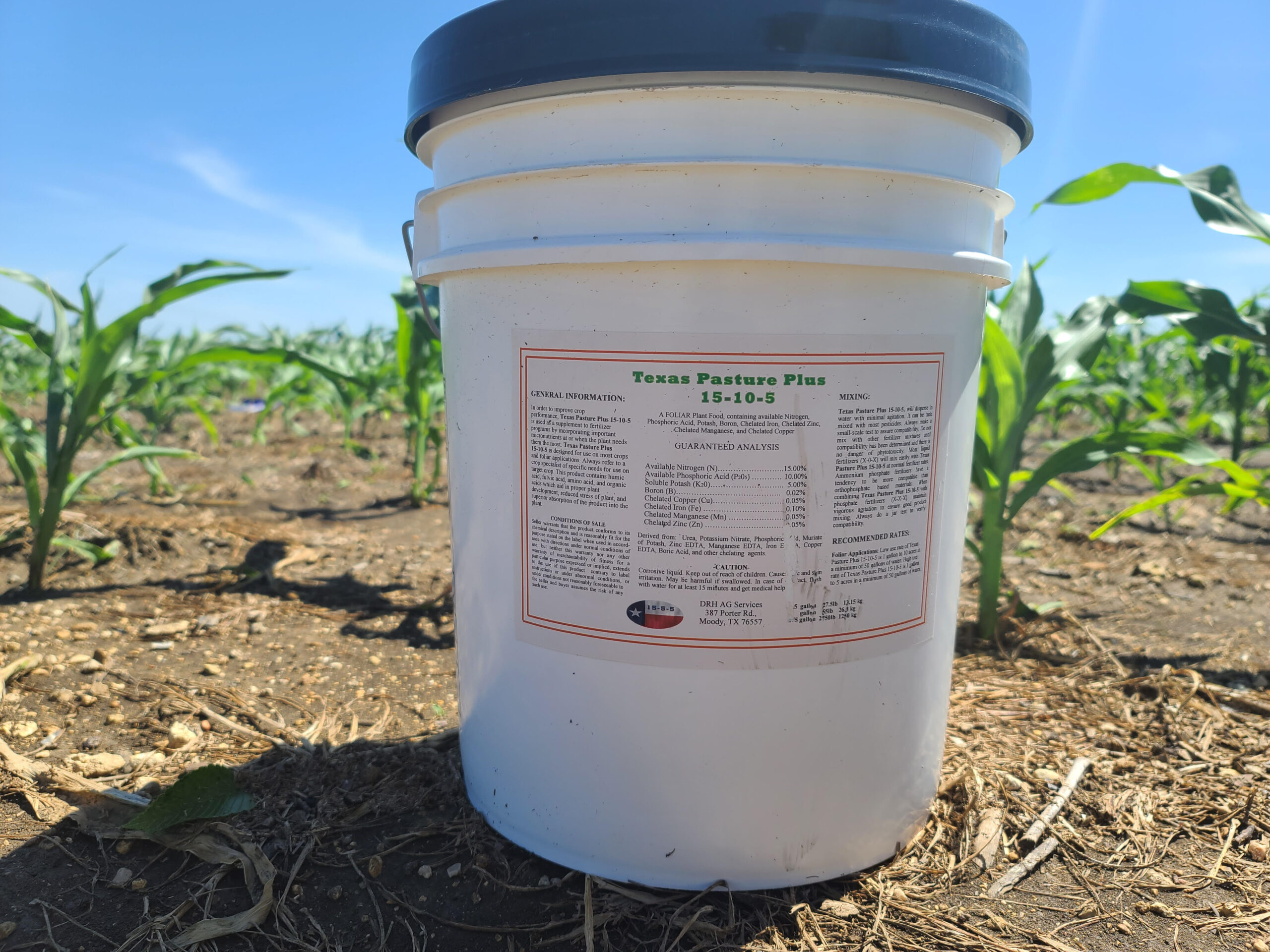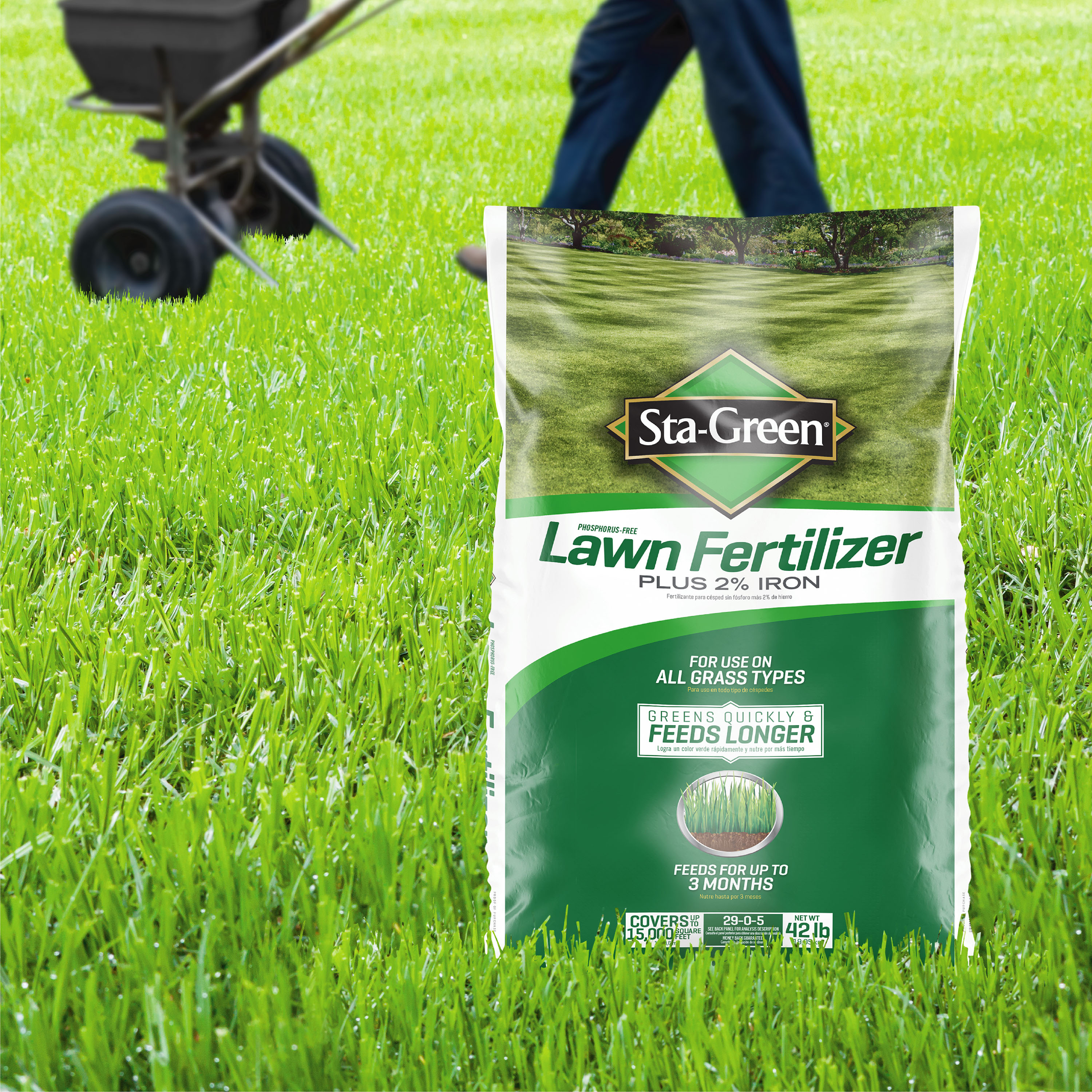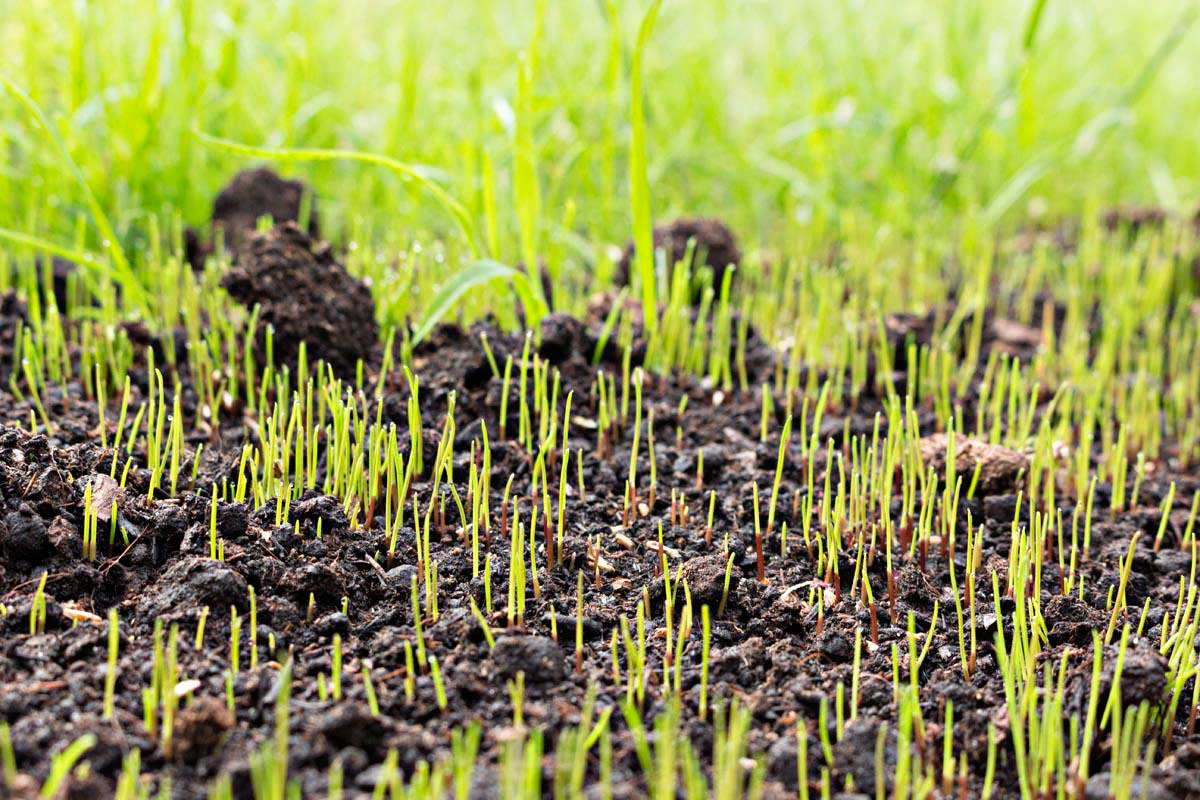

Articles
What Is The Best Fertilizer For Hay Field
Modified: March 24, 2024
Looking for articles on the best fertilizer for hay fields? Find expert advice and tips to enhance your hay production with the right fertilizer choice.
(Many of the links in this article redirect to a specific reviewed product. Your purchase of these products through affiliate links helps to generate commission for Storables.com, at no extra cost. Learn more)
Introduction
When it comes to maintaining a healthy and productive hay field, choosing the right fertilizer is essential. Fertilizers provide the necessary nutrients that grasses need to thrive, ensuring abundant yields and high-quality forage. However, with a plethora of options available in the market, it can be daunting to determine which fertilizer is best for your hay field.
In this article, we will explore the factors to consider when choosing a fertilizer for your hay field, the different types of fertilizers available, and the best practices for fertilizing your hay field.
Growing hay requires careful management and attention to detail. Proper fertilization is crucial in order to optimize growth, promote nutrient uptake, and minimize weed and disease pressure. By understanding the different types of fertilizers and their application techniques, you can ensure that your hay field remains healthy and productive for years to come.
So, let’s dive in and discover what factors you should consider when selecting a fertilizer for your hay field!
Key Takeaways:
- Proper fertilization is crucial for hay fields, considering factors like soil testing, nutrient requirements, and application methods. Organic and synthetic fertilizers offer unique benefits, and responsible application techniques are essential for optimal growth and environmental sustainability.
- Understanding the nutrient requirements of hay crops is essential for maximizing yields. Following best practices, such as soil testing, proper nutrient balance, and responsible environmental stewardship, ensures healthy and productive hay fields. Regular monitoring and adjustment are key for long-term sustainability.
Read more: What Grass Is Hay
Factors to Consider when Choosing Fertilizer for Hay Field
When selecting a fertilizer for your hay field, there are several important factors to consider. These factors will help you choose the right fertilizer that meets the specific needs of your hay crop and soil conditions. Let’s take a look at some of the key factors:
- Soil Testing: Conducting a soil test is an essential first step in determining the nutrient requirements of your hay field. Soil testing provides valuable information about the pH level, organic matter content, and nutrient levels in the soil. This information will guide you in selecting a fertilizer that addresses any deficiencies or imbalances in the soil.
- Nutrient Requirements: Different hay crops have varying nutrient requirements. Understanding the specific nutrient needs of your hay crop will help you choose a fertilizer with the appropriate nutrient composition. Nitrogen (N), phosphorus (P), and potassium (K) are the primary macronutrients required by most hay crops, but micronutrients like zinc, boron, and manganese may also be necessary in certain cases.
- Crop Stage: The growth stage of your hay crop should also be taken into consideration when choosing a fertilizer. Different fertilizers have varying release rates, which can influence nutrient availability throughout the growing season. For example, slow-release fertilizers are ideal for providing a steady supply of nutrients over an extended period of time, while quick-release fertilizers provide a rapid nutrient boost.
- Application Method: Consider the method of fertilizer application that is most suitable for your hay field. Granular fertilizers can be spread using a broadcast spreader, while liquid fertilizers can be applied through spraying systems. The choice of application method will depend on the size of your hay field, equipment availability, and personal preference.
- Environmental Impact: It’s important to choose a fertilizer that minimizes environmental impact. Look for fertilizers that are formulated to reduce nutrient runoff and leaching, as excess nutrients can contribute to water pollution. Additionally, consider using organic fertilizers or incorporating sustainable farming practices to promote soil health and biodiversity.
By considering these factors, you can make an informed decision when selecting a fertilizer for your hay field. Understanding the unique requirements of your soil and hay crop will help you choose a fertilizer that promotes optimal growth and yield while minimizing environmental impact.
Different Types of Fertilizers for Hay Field
When it comes to fertilizing your hay field, there are two main types of fertilizers to consider: organic fertilizers and synthetic fertilizers. Let’s take a closer look at each type:
Organic Fertilizers
Organic fertilizers are derived from natural sources such as plant and animal byproducts. They provide slow-release nutrients that are gradually released to the plants over time. One of the main advantages of organic fertilizers is that they improve soil health and fertility in the long run.
Types of organic fertilizers commonly used for hay fields include:
- Manure: Animal manure, such as cow or horse manure, is a common organic fertilizer option. It is a good source of nitrogen, phosphorus, and potassium, as well as other essential nutrients. However, it is important to compost or age the manure before applying it to the hay field to avoid potential weed seed contamination.
- Compost: Compost is a mixture of decomposed organic matter that provides a rich source of nutrients and improves soil structure. It is beneficial for adding organic matter to the soil and enhancing its water-holding capacity.
- Cover Crops: Planting cover crops, such as legumes or grasses, can help add nutrients to the soil naturally. When these cover crops are incorporated into the soil, they release nitrogen and other nutrients, acting as a green manure.
Synthetic Fertilizers
Synthetic fertilizers are manufactured products that provide a concentrated source of nutrients. They are typically available in granular or liquid form and offer a fast-release of nutrients, making them quickly available to the plants. Synthetic fertilizers are often formulated with specific nutrient ratios to cater to the specific needs of different crops.
Common synthetic fertilizers used for hay fields include:
- Urea: Urea is a nitrogen-based fertilizer that is widely used in hay production. It is highly soluble and easily absorbed by plants, providing a quick nitrogen boost.
- Ammonium Nitrate: Ammonium nitrate is another nitrogen-based fertilizer that is fast-acting and suitable for promoting quick growth in hay fields. However, it is important to use ammonium nitrate with caution due to its potential explosive properties.
- Triple Superphosphate: Triple superphosphate is a phosphorus-based fertilizer that delivers high amounts of phosphorus to the plants. It is commonly used when the soil has low phosphorus levels.
- Potassium Chloride: Potassium chloride is a potassium-based fertilizer that helps improve plant metabolism and strengthen resistance to stressors. It is effective in promoting root development and enhancing overall plant health.
When choosing between organic and synthetic fertilizers, it’s important to consider factors such as nutrient content, release rates, soil health, and environmental impacts. Some farmers opt for a combination of both organic and synthetic fertilizers to reap the benefits of both types.
Remember, before applying any fertilizer to your hay field, it is always recommended to read and follow the manufacturer’s instructions for proper usage and application rates.
Read more: What Is Grass Hay For Rabbits
Organic Fertilizers for Hay Field
Organic fertilizers are an excellent choice for promoting healthy and sustainable growth in your hay field. Derived from natural sources, these fertilizers provide a range of benefits for both the soil and the plants. Here are some common types of organic fertilizers that are well-suited for hay fields:
Manure
Manure is one of the most readily available and commonly used organic fertilizers for hay fields. It contains a blend of essential nutrients, including nitrogen, phosphorus, and potassium, which are essential for plant growth. Manure also improves soil structure, enhances water retention, and increases microbial activity in the soil.
When using manure as a fertilizer, it is crucial to properly compost or age it before application. This allows harmful bacteria and weed seeds to break down, reducing the risk of contamination. Apply aged manure evenly across the hay field, ensuring proper incorporation into the soil to prevent nutrient runoff.
Compost
Compost is another valuable organic fertilizer option. It is created by decomposing organic matter, such as yard waste, crop residue, or kitchen scraps. Compost enhances soil fertility, improves nutrient availability, and promotes beneficial soil microorganisms. It also helps to retain moisture in the soil, reducing irrigation needs.
Apply compost to your hay field by spreading a layer of compost on the soil surface. You can either manually incorporate it into the top layer of soil or leave it to naturally break down over time. Regularly adding compost to your hay field will gradually enrich the soil and support healthy plant growth.
Cover Crops
Planting cover crops, such as legumes or grasses, is another effective way to provide organic fertilizer to your hay field. Leguminous cover crops, such as clover or alfalfa, have the unique ability to fix atmospheric nitrogen into the soil through a symbiotic relationship with nitrogen-fixing bacteria. This process enriches the soil with nitrogen, benefiting the subsequent hay crop.
At the end of the cover crop’s growing season, it can be mowed or tilled into the soil as green manure. This practice adds organic matter, nutrients, and improves soil structure. It is essential to time the termination of the cover crop appropriately to prevent competition with the hay crop.
When using organic fertilizers, it is important to note that their nutrient availability may be slower compared to synthetic fertilizers. It is recommended to conduct regular soil tests to monitor the nutrient content and adjust fertilization practices accordingly.
By incorporating organic fertilizers into your hay field management, you not only provide essential nutrients to your crops but also contribute to sustainable farming practices. Organic fertilizers enrich the soil, improve its structure, and support long-term soil health, resulting in vibrant and productive hay fields.
Read more: What Is Grass Hay
Synthetic Fertilizers for Hay Field
Synthetic fertilizers offer a convenient and readily available option for providing essential nutrients to your hay field. These fertilizers are manufactured using synthetic processes and are designed to deliver specific ratios of nutrients. Here are some common types of synthetic fertilizers that are commonly used in hay production:
Urea
Urea is a popular nitrogen-based fertilizer that is widely used in hay fields. It is highly soluble in water and quickly absorbed by plants, making it an effective source of nitrogen. Urea provides a rapid nutrient boost, stimulating plant growth and promoting lush, green foliage.
To apply urea, spread it evenly across the hay field using a spreader or sprayer. It is important to follow the recommended application rates to avoid over-application, which can lead to nutrient imbalances or leaching.
Ammonium Nitrate
Ammonium nitrate is another commonly used nitrogen-based fertilizer for hay production. It is a fast-acting fertilizer that provides readily available nitrogen to the plants. Ammonium nitrate is particularly effective for promoting rapid growth and increasing yields.
When using ammonium nitrate, it is crucial to handle it with care due to its potential explosive properties. Follow safety guidelines and regulations when storing, handling, and applying ammonium nitrate to ensure safety and prevent environmental risks.
Triple Superphosphate
Triple superphosphate is a phosphorus-based fertilizer that provides a high concentration of phosphorus to your hay field. Phosphorus is essential for root development and overall plant health. This fertilizer is especially beneficial when soil tests indicate low phosphorus levels.
Apply triple superphosphate evenly over the hay field, making sure to follow the recommended application rates. Proper incorporation into the soil will ensure that the phosphorus is readily available to the roots for uptake.
Read more: What Is A Croquet Field Called?
Potassium Chloride
Potassium chloride is a potassium-based fertilizer that plays a crucial role in promoting plant metabolism, tolerance to stress, and overall crop quality. Potassium is essential for enhancing disease resistance and improving nutrient uptake in hay crops.
When applying potassium chloride, distribute it evenly over the hay field to ensure uniform nutrient distribution. Be mindful of using excessive amounts of potassium, as this can lead to nutrient imbalance and potentially harm the crop.
It is important to note that synthetic fertilizers typically provide fast-release nutrients to the plants. Regular soil testing and proper fertilization schedules are crucial to avoid over-application and potential nutrient imbalances. It is also advisable to follow the manufacturer’s instructions for application rates and safety precautions.
When used responsibly and in appropriate amounts, synthetic fertilizers can be an effective tool in ensuring optimal growth and high-quality hay production in your fields.
Nutrient Requirements for Hay Field
Understanding the nutrient requirements of your hay field is essential for achieving optimal growth and maximizing yields. Different hay crops have varying nutrient demands, and meeting these requirements is crucial for maintaining healthy and productive fields. Here are the key nutrients that hay crops typically need:
Nitrogen (N)
Nitrogen is one of the most important nutrients for hay production as it is essential for promoting leafy growth and enhancing protein content in forage. Nitrogen deficiency can result in stunted growth, reduced yields, and decreased forage quality. However, excessive nitrogen application can lead to excessive vegetative growth, reduced disease resistance, and environmental pollution.
The recommended nitrogen application rate for hay crops varies depending on factors such as the type of hay crop, soil fertility, and desired yield. Conducting regular soil tests can help determine the nitrogen requirements of your hay field and guide the appropriate application rates.
Phosphorus (P)
Phosphorus is crucial for promoting root development, energy transfer, and respiration processes in hay crops. It also plays a vital role in seed and fruit formation. Phosphorus deficiency can lead to reduced root growth, delayed maturity, and decreased fertility in hay fields.
Soil tests are essential for identifying phosphorus deficiencies and determining the need for phosphorus fertilization. The recommended application rate depends on the initial phosphorus levels in the soil and the nutrient requirements of the specific hay crop.
Potassium (K)
Potassium is essential for regulating water uptake, enhancing nutrient translocation, and improving overall plant health and disease resistance. It also contributes to the synthesis of proteins and carbohydrates in hay crops. Potassium deficiency can result in reduced stress tolerance, decreased yields, and increased susceptibility to pests and diseases.
Similar to nitrogen and phosphorus, the potassium requirements of your hay crop can be determined through soil testing. The recommended application rate depends on the initial potassium levels in the soil and the specific needs of the hay crop.
Micronutrients
In addition to the primary macronutrients mentioned above, hay crops also require various micronutrients for optimal growth. These micronutrients include iron, manganese, boron, zinc, copper, and molybdenum. While they are needed in smaller quantities, micronutrient deficiencies can still have a significant impact on hay crop health and yields.
Regular soil testing can help identify micronutrient deficiencies and determine the appropriate corrective measures. In some cases, foliar applications or soil amendments may be necessary to address micronutrient deficiencies in hay fields.
It’s important to note that nutrient requirements can vary depending on the hay crop species, regional climate, and soil type. Regular soil testing and consultation with agricultural experts or agronomists can provide valuable insights into the specific nutrient needs of your hay field.
By understanding and meeting the nutrient requirements of your hay field, you can ensure healthy and productive growth, while also optimizing forage quality and overall hay field performance.
Proper Application Techniques for Fertilizing Hay Field
Applying fertilizer correctly plays a crucial role in maximizing its effectiveness and minimizing potential negative impacts. Here are some proper application techniques to consider when fertilizing your hay field:
Calibration
Before applying fertilizer, it is important to calibrate your equipment properly. Calibration ensures that you are applying the correct amount of fertilizer per acre. Follow the manufacturer’s recommendations for calibration or consult with agricultural experts for guidance. Proper calibration helps you avoid over or under application, ensuring optimal nutrient distribution in the hay field.
Read more: What Is Byhalia Grass Hay
Timing
The timing of fertilizer application is key to maximizing its benefits. In general, it is recommended to apply fertilizers when the hay crop is actively growing and can readily absorb nutrients. This is typically during the early stages of the growing season, before the hay reaches its maximum height. Applying fertilizers too late in the season may not provide significant benefits and may contribute to nutrient runoff.
Even Distribution
Achieving even distribution of fertilizer across the hay field is essential to ensure uniform nutrient availability for the entire crop. Uneven distribution can lead to patchy growth and yield variability. Utilize proper equipment, such as spreaders or sprayers, to evenly distribute the fertilizer throughout the field. Regularly inspect and maintain your equipment to ensure it is functioning optimally and providing consistent application.
Incorporation
Incorporating the fertilizer into the soil is important for its proper utilization by the hay crop. For granular fertilizers, such as manure or urea, mechanically incorporate them into the soil using tillage equipment or by lightly harrowing the field. This helps prevent nutrient losses due to volatilization and improves contact between the fertilizer and the roots of the plants.
Nutrient Placement
Sometimes, certain nutrients may benefit from targeted placement. For example, phosphorus, which moves slowly in the soil, can be placed closer to the roots to enhance uptake. Consider using fertilizers with different release rates and nutrient placement strategies based on the specific needs of your plants and soil conditions. This can help optimize nutrient availability and minimize wastage.
Read more: What Is The Best Fertilizer For Strawberries
Environmental Considerations
When applying fertilizer, it is important to consider the surrounding environment. Avoid fertilizing near water bodies to prevent nutrient runoff and water pollution. Applying during calm weather conditions can also minimize drift and ensure that the fertilizer reaches its intended target area. Follow local regulations and best management practices to minimize any potential negative impacts on the environment.
Remember to consult soil test results and consider crop nutrient requirements when making fertilizer application decisions. Regular soil testing, along with proper fertilization techniques, will allow you to make informed decisions about nutrient application and maximize the productivity of your hay field.
Best Practices for Fertilizing Hay Field
To ensure optimal growth, productivity, and environmental sustainability in your hay field, it is important to follow best practices when fertilizing. Here are some key practices to consider:
Soil Testing
Regular soil testing is essential for understanding the nutrient content and pH level of your hay field. By knowing the soil’s nutrient status, you can make informed decisions about which fertilizers and application rates are necessary. Conduct soil tests at least every two to three years or as recommended by your local agricultural extension office.
Follow Nutrient Recommendations
Based on the results of your soil test, follow the nutrient recommendations provided by the testing laboratory or agricultural experts. These recommendations will help you determine the appropriate amounts of nitrogen, phosphorus, potassium, and micronutrients needed for your specific hay crop and soil conditions.
Read more: What Is The Best Fertilizer For Grass
Ensure that you maintain a proper nutrient balance in your hay field. Applying excessive amounts of any one nutrient can lead to imbalances and other problems. Focus on achieving a balanced ratio of nitrogen, phosphorus, potassium, and other essential nutrients to promote healthy growth and maximize yields.
Read more: What Is The Best Fertilizer For Grass
Choose Appropriate Fertilizer
Select fertilizers that are suitable for your hay crop and soil conditions. Consider using a combination of organic and synthetic fertilizers to optimize nutrient availability and promote long-term soil health. Read the labels and follow the manufacturer’s instructions for proper usage, application rates, and safety precautions.
Timing and Frequency
Apply fertilizer at the right time to ensure maximum effectiveness. Time the application to coincide with the hay crop’s growth stage and actively growing period. Split applications may be necessary for certain nutrients, especially nitrogen, to provide a continuous supply throughout the growing season.
Proper Application Techniques
Follow proper application techniques to ensure even distribution and efficient nutrient uptake. Calibrate your equipment, carefully calculate application rates, and use machinery designed for accurate and uniform fertilization. Incorporate granular fertilizers into the soil to improve nutrient contact and reduce potential losses.
Monitor and Adjust
Regularly monitor the growth and health of your hay crop during the growing season. Observe for signs of nutrient deficiencies or excesses and adjust fertilization practices accordingly. Over time, you may need to fine-tune your fertilization approach based on observations and ongoing soil testing.
Read more: What Is The Best Fertilizer For Blueberries
Environmental Stewardship
Fertilize responsibly to minimize negative environmental impacts. Avoid over-application of fertilizers, as excess nutrients can leach into groundwater or contribute to water pollution. Also, take care to prevent fertilizer runoff into nearby water bodies. Follow local regulations and environmental guidelines to preserve the health of ecosystems surrounding your hay field.
By following these best practices, you can optimize the nutrient management in your hay field, maximize yields, and promote the long-term sustainability of your farming operation.
Conclusion
Fertilizing your hay field is a critical component of maintaining a healthy and productive crop. By considering key factors such as soil testing, nutrient requirements, and proper application techniques, you can make informed decisions to enhance the growth and quality of your hay field.
Understanding the nutrient requirements of your hay crop is paramount. Conducting regular soil tests allows you to identify any nutrient deficiencies or imbalances and tailor your fertilization approach accordingly. Whether you choose organic or synthetic fertilizers, each type offers unique benefits and considerations for your hay field.
Proper application techniques play a fundamental role in ensuring the even distribution and effective utilization of fertilizers. Calibrating your equipment, timing applications correctly, and incorporating the fertilizers into the soil help optimize nutrient availability and minimize potential environmental impacts.
It is important to remember that fertilizing hay fields is not a one-time event. Regular monitoring, adjustment, and ongoing soil testing are necessary for maintaining the health and productivity of your hay crop. Stay mindful of environmental stewardship by following best practices and local guidelines to minimize pollution risks.
Ultimately, the goal of fertilizing your hay field is to enhance growth, increase yields, and produce high-quality forage. By applying the proper nutrients at the right time and in the appropriate amounts, you can ensure the long-term sustainability and profitability of your hay production.
As you continue to refine your fertilization practices, stay informed about the latest research, technologies, and sustainable farming techniques. Embrace a holistic approach to your hay field management that integrates fertilization practices with other factors such as irrigation, weed control, and pest management.
Remember, successful hay production requires a combination of knowledge, experience, and careful observation. By staying attuned to the unique needs of your hay crop and implementing best practices, you can maximize the potential of your hay field and achieve optimal results year after year.
Frequently Asked Questions about What Is The Best Fertilizer For Hay Field
Was this page helpful?
At Storables.com, we guarantee accurate and reliable information. Our content, validated by Expert Board Contributors, is crafted following stringent Editorial Policies. We're committed to providing you with well-researched, expert-backed insights for all your informational needs.








0 thoughts on “What Is The Best Fertilizer For Hay Field”